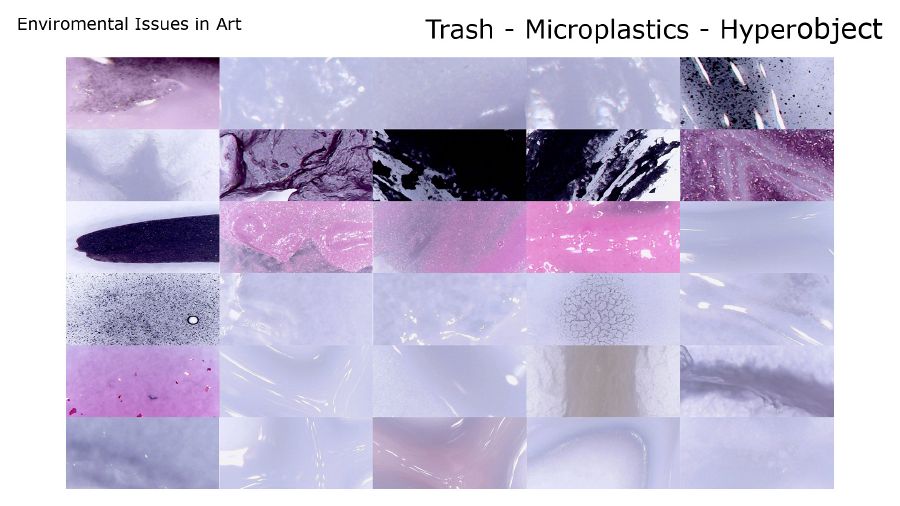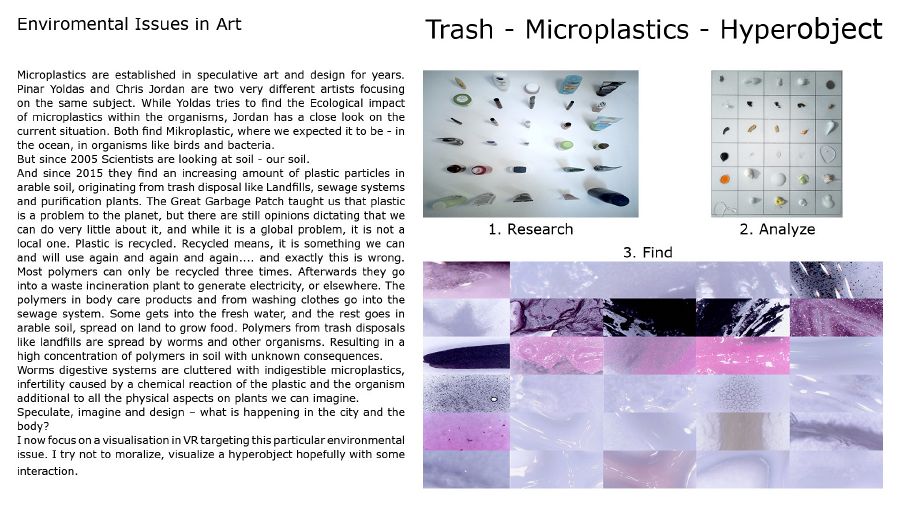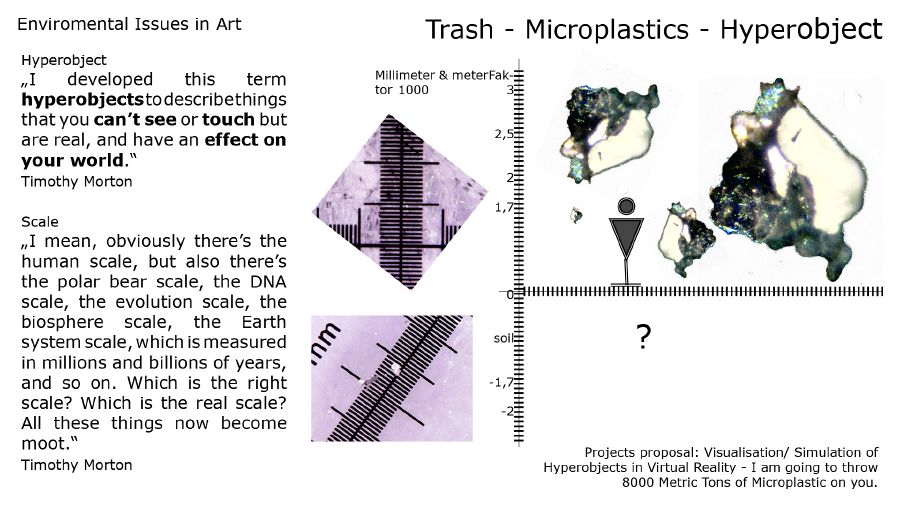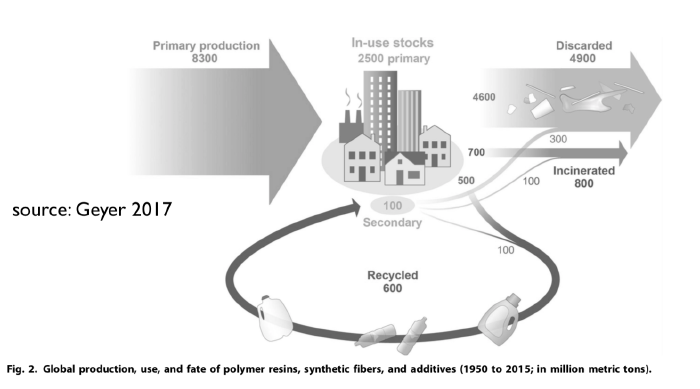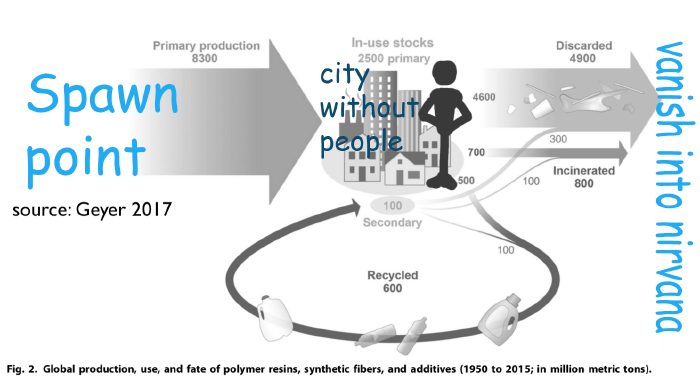Virtual Reality Experiment – or “just” a visualization - some thoughts
“How do you feel with this data”
Find the unseen, something about trash and what happens when we try to wash bodies & clothes
break the hyperobject ( quote Timothy Mortons definition of Hyperobject.) Explain without a simplification or a metaphor.
Can we create with VR a tool for simulation/ experience/ visualization/ illustration for environmental issues?
The new finding, the new study, new paper – try to keep up, live correctly. Nowadays we are enclosed, wrapped and driven by data.
Unity and Blender have "Particle systems" - we also have particles - take these plastic particles, which are unnatural but not unreal, and make them virtual.
References (not sources, but opinions I encounter)
Youtube comments on Wie kommt unser Plastikmüll ins Meer
Related Artists (and why in italics)
- Antfarm Link to the Group
They base their work on mass media and consumerism and created something awesome to experience. People where invited to a new environment to rethink issues. They created room for discussion. All this by creating artworks which understood organisms differently than other people do.
- Kat f Austen Coral empathy device
As in Antfarm - understand the organism. Create an environment, a place to discuss the issue, and create a mood by putting people in the environment.
- Pinar Yoldas Wiki Pinar Yoldas Talk at ZKM GLOBALE "I love the scientific approach. Sophisticated artwork based on research with easy to comprehend the message. Without moralization."
- J. Steensen (VR Artist) Website "Environment based on scientific data. I do not like the experience as a whole, I think there could be more."
- The team around Flavia Caviezel Times of Waste "Interesting because of the investigating research, workshops and so on."
Sources
https://brooklynrail.org/2013/11/art_books/timothy-morton-with-greg-lindquist
BUND 2018 BUND publications (Both "Einkaufsratgeber Mikroplastik" and "Mikroplastik in Textilien" March 2018 ("shopping advice microplastics" and "Microplastics in textiles/fashion" )
Boucher, J. and Friot D. (2017). Primary Microplastics in the Oceans: A Global Evaluation of Sources. Gland, Switzerland: IUCN. 43pp.
de Souza Machado AA, Kloas W, Zarfl C, Hempel S, Rillig MC. Microplastics as an emerging threat to terrestrial ecosystems. Glob Change Biol. 2018;24:1405–1416. Doi Link
"Mikroplastik in Binnengewässern Süd- und Westdeutschlands" (2018)
Johnson, B. (2013). Zero Waste Home. [S.I.]: Scribner.
MORTON, T. (2018). DARK ECOLOGY. [S.l.]: COLUMBIA UNIVERSITY PRESS. (also look at [1] )
R. Geyer, J. R. Jambeck, K. L. Law, Production, use, and fate of all plastics ever made. Sci. Adv. 3, e1700782 (2017).
Plastik überall Geschichten vom Müll. (2017). [film] Directed by A. Knechtel and N. Teuscher. Deutschland: ZDF.
TEDx Talks (2016). Two adults, two kids, zero waste | Bea Johnson | TEDxFoggyBot- tom. [video] Available at: SUmo-40pqA [Accessed 9 Jun. 2018].
